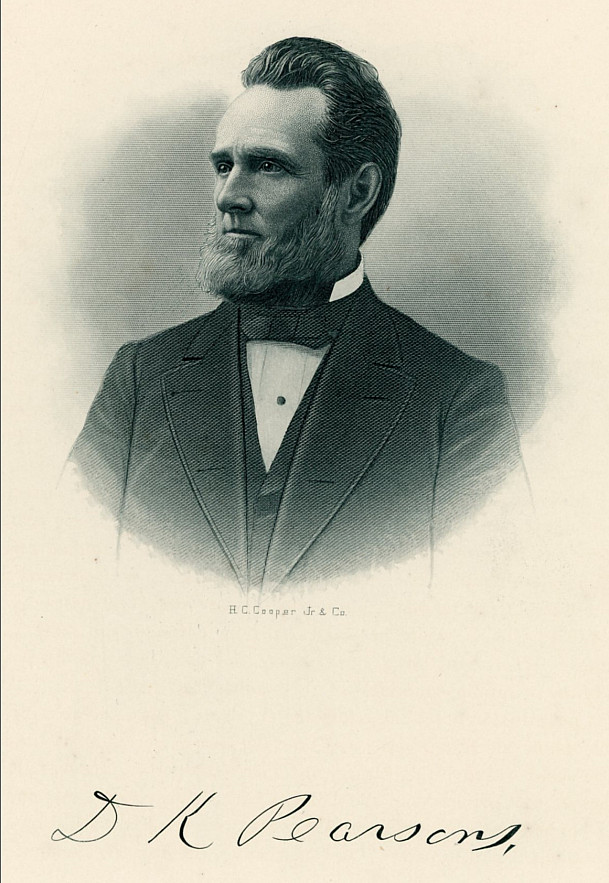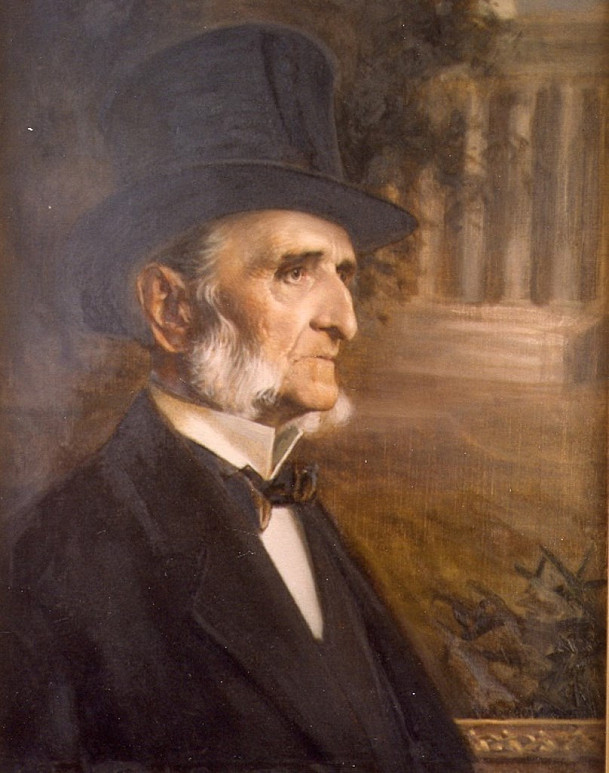Fridays with Fred - D.K. Pearsons and Beloit College
On the morning of May 10th, 1889, Beloit College President Edward Dwight Eaton sat at his desk, letter opener in hand and a short stack of mail in front of him. He picked up a thin envelope postmarked Chicago, sliced it open, and read the following: “Pres. Eaton: If I will give your college $100,000 can you raise $100,000 more before July 1st? I mean business. Truly, D.K. Pearsons.”

Eaton had never heard of the man, but Daniel Kimball Pearsons was well aware of Beloit College. He recalled first hearing of Beloit in 1838, “while a young lad among the New England hills” of Vermont when a covered wagon approached. “I went up to the wagon,” he said, “and asked them whither they were going, and they answered, ‘to Beloit, Wisconsin.’” He never forgot the pioneers and, in 1851, after schooling, launching a career as a doctor, and marrying, he decided to head west to Janesville, Wisconsin. The arduous journey eventually led them through “the small hamlet” of Beloit, where they rested at a “little wooden tavern.” In Pearsons’ own words:
“When we started on for Janesville, one of those big, burly fellows who always get into a new country, climbed into the wagon for a ride. As we drove along we saw a brick building going up, and I asked the man, ‘What are they doing there?’ ‘Why, there are some Yankee cranks building a college,’ he answered. That rather hit me. When they call me a Yankee, I take off my hat and bow; and when they call me an old Puritan, I make three bows. On the way to Janesville that man cursed everything that was good, and I stood up for Christian education the best I knew how. When we got to Janesville, I shook my fist in his face, and said, ‘Old fellow, I am going to get rich, and when I do, I am going to help lift up these colleges that these ‘Yankee cranks’ are building up.’ I had my eyes on Beloit at that time.”

By 1860, D.K. Pearsons had moved to Chicago and, over the next 30 years, he made his fortune, mainly through real estate. Then he decided to give it all away. Although he noted that poverty had deprived him from attending college for more than a year, he was a great believer in higher education and, in particular, what he called “freshwater colleges.” “I wanted to help the poor boys and girls of our country,” he wrote in “A Lesson in Practical Philanthropy.” “I wanted to fix it so that these…sons and daughters of wage-earners, could have the privilege of a college close to them, so that they could get a liberal education.”
He also made clear that when he offered a vast sum of money to an institution, the recipient should match the funds. “I make everybody work a little,” he proclaimed, “and that is the right way to do it.”
Could Beloit College raise $100,000 in something less than two months? During an era of economic recession, it was more than a daunting task for a small school. The college had many needs, including dormitories, a more commodious chapel, and, what seemed like a pipe dream at the time, a modern building for the sciences. President Eaton immediately set out to match Pearsons’ offer. Within a short time, Beloit citizens, the college trustees, and hundreds of alumni pledged thousands of dollars. Not to be left out, Beloit College students gathered in the chapel (South College) and vowed to help the cause through their own fundraising. Professor James J. Blaisdell recalled standing outside his house on the corner of College and Chapin streets, listening to loud cheers and huzzahs wafting across campus.
At Commencement that June, President Eaton announced that the college had met its goal. And, rising for a speech at the Commencement dinner, D. K. Pearsons declared that he wanted half of his donation “to be used as a fund to loan to young men who are struggling for an education and who could not get it without help.” He added, “To-day I count the happiest day of my life.”

Pearsons went on to help many other institutions of higher learning, but Beloit College, with its “grand character-building,” as he called it, remained closest to his heart. Over the next 20 years, he made multiple donations, all on condition that the college raise a like amount. Among several achievements, his transformative gifts funded the construction of Pearsons Hall of Science, old Chapin Hall [razed in 1965], and, after the college became coeducational in 1895, Emerson Hall, the first women’s dormitory.
Daniel Kimball Pearsons converted his wealth into good fortune and prosperity for others. “I haven’t any children,” he said, “except my colleges.” He claimed no “benevolence,” and yet those “children” brought a “great and growing joy” to the self-described “hard-hearted, tight-fisted, penny-squeezing old curmudgeon.” “I have watched them,” he wrote, “scolded them, nurtured them, and loved them.” By the time he passed away at the age of 92 in 1912, he was practically penniless. His legacy at Beloit College lives on in one of its most magnificent buildings. We’ll explore the history of his namesake, Pearsons Hall, next time.
Share:
Open gallery

Related Stories


